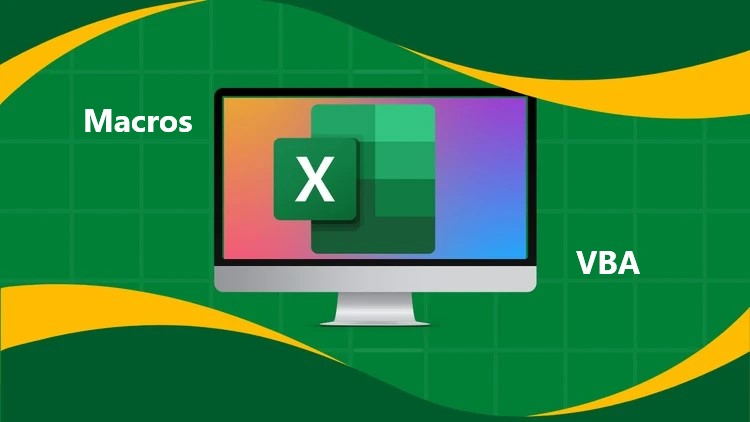Excel Automation with Macros and VBA offers businesses a powerful way to optimize processes, increase efficiency, and reduce manual effort. In today’s fast-paced business environment, the ability to automate repetitive tasks can save countless hours and significantly improve productivity. Macros and Visual Basic for Applications (VBA) equip users with tools to automate tasks in Excel, transforming data management and analysis.
The Basics of Excel Automation with Macros
Excel Automation with Macros allows users to record a series of actions and play them back with a single command. This capability is particularly useful for tasks that are repetitive, such as formatting data, generating reports, or performing calculations. By automating these processes, businesses can ensure consistency, reduce errors, and free up valuable time for more strategic activities.
Macros record the steps you take in Excel and then execute them automatically whenever needed. For instance, if you regularly apply the same formatting to a report, you can create a macro to perform that formatting with a single click. This eliminates the need to repeat the steps manually every time, leading to faster and more efficient workflows.
Another advantage of using macros is their ease of use. Even users with little to no programming experience can create simple macros by using Excel’s built-in macro recorder. This feature allows you to record your actions without writing any code, making automation accessible to a wider audience. However, for more complex tasks, VBA comes into play, offering a deeper level of customization and control.
Introduction to VBA for Advanced Automation
VBA, or Visual Basic for Applications, is a programming language that extends the capabilities of Excel by allowing users to write custom scripts for automating tasks. While macros are ideal for straightforward automation, VBA is essential for more advanced scenarios where macros alone may not suffice. Excel Automation with Macros and VBA, when combined, offers unparalleled flexibility and power.
With VBA, users can create complex procedures that interact with Excel’s functions in ways that macros cannot. For example, you can use VBA to create custom functions, automate interactions with other applications, and efficiently manage large datasets. This level of control allows businesses to tailor Excel to their specific needs, making it a highly versatile tool for data management and analysis.
One of the most significant benefits of VBA is its ability to automate decision-making processes within Excel. For instance, you can write VBA scripts that analyze data and automatically generate reports based on predefined criteria. This capability not only saves time but also ensures that business decisions are based on accurate and up-to-date information.
Additionally, VBA enables users to create custom Excel add-ins and user interfaces, further enhancing the functionality of Excel. You can share these add-ins across an organization, allowing multiple users to benefit from the same automation without recreating it individually. This scalability makes VBA an invaluable resource for businesses looking to standardize and streamline their processes.
Practical Applications of Excel Automation with Macros and VBA
You can apply Excel Automation with Macros and VBA to various business functions, including finance, accounting, marketing, and operations. For instance, in finance, you can use VBA to automate the consolidation of financial statements, perform complex calculations, and generate budget reports. In marketing, macros can streamline the process of analyzing campaign data, creating charts, and preparing presentations.
In operations, Excel automation can manage inventory data, track orders, and monitor supply chain performance. By automating these tasks, businesses can ensure that they operate more efficiently and respond quickly to changes in demand or supply. The ability to automate data entry and processing also reduces the likelihood of human error, leading to more accurate records and reports.
Another common application of Excel Automation with Macros and VBA is in data analysis. Businesses often deal with large datasets that require extensive manipulation and analysis. VBA can automate data cleaning, sorting, and filtering, allowing analysts to focus on deriving insights rather than performing repetitive tasks. For example, a VBA script can be written to automatically update a dashboard with the latest sales data, providing real-time insights to decision-makers.
Moreover, Excel Automation with Macros and VBA can facilitate data integration across different systems. For instance, VBA can be used to automate the process of importing data from external sources, such as databases or web services, into Excel. This integration ensures that all relevant data is available in one place, making it easier to analyze and report on.
The Benefits of Excel Automation with Macros and VBA
The benefits of Excel Automation with Macros and VBA are manifold. First and foremost, automation leads to significant time savings. Tasks that once took hours can be completed in minutes, allowing employees to focus on more valuable activities. This increased efficiency can lead to cost savings, as fewer resources are required to complete the same amount of work.
Automation also enhances accuracy and consistency. By removing the need for manual intervention, the risk of human error is greatly reduced. This is particularly important in areas such as finance and compliance, where errors can have serious consequences. Excel Automation with Macros and VBA ensures that tasks are performed exactly the same way every time, leading to more reliable results.
Furthermore, Excel automation improves scalability. As businesses grow, the volume of data they manage increases, making manual processes unsustainable. Macros and VBA allow businesses to scale their operations without a corresponding increase in labor costs. This scalability is essential for maintaining efficiency and competitiveness in a rapidly changing business environment.
Finally, Excel Automation with Macros and VBA provides a competitive advantage. Businesses that can automate routine tasks can respond more quickly to market changes, capitalize on new opportunities, and deliver better services to their customers. By leveraging the full capabilities of Excel, companies can optimize their processes and achieve better outcomes.
Conclusion
Excel Automation with Macros and VBA offers businesses a powerful way to streamline operations, improve efficiency, and reduce errors. By automating repetitive tasks, companies can save time, enhance accuracy, and focus on more strategic activities. Whether you are managing data, generating reports, or integrating systems, Excel automation provides the tools needed to optimize your workflow and achieve better results. As businesses continue to seek ways to improve productivity, Excel Automation with Macros and VBA will remain a critical component of their success.


